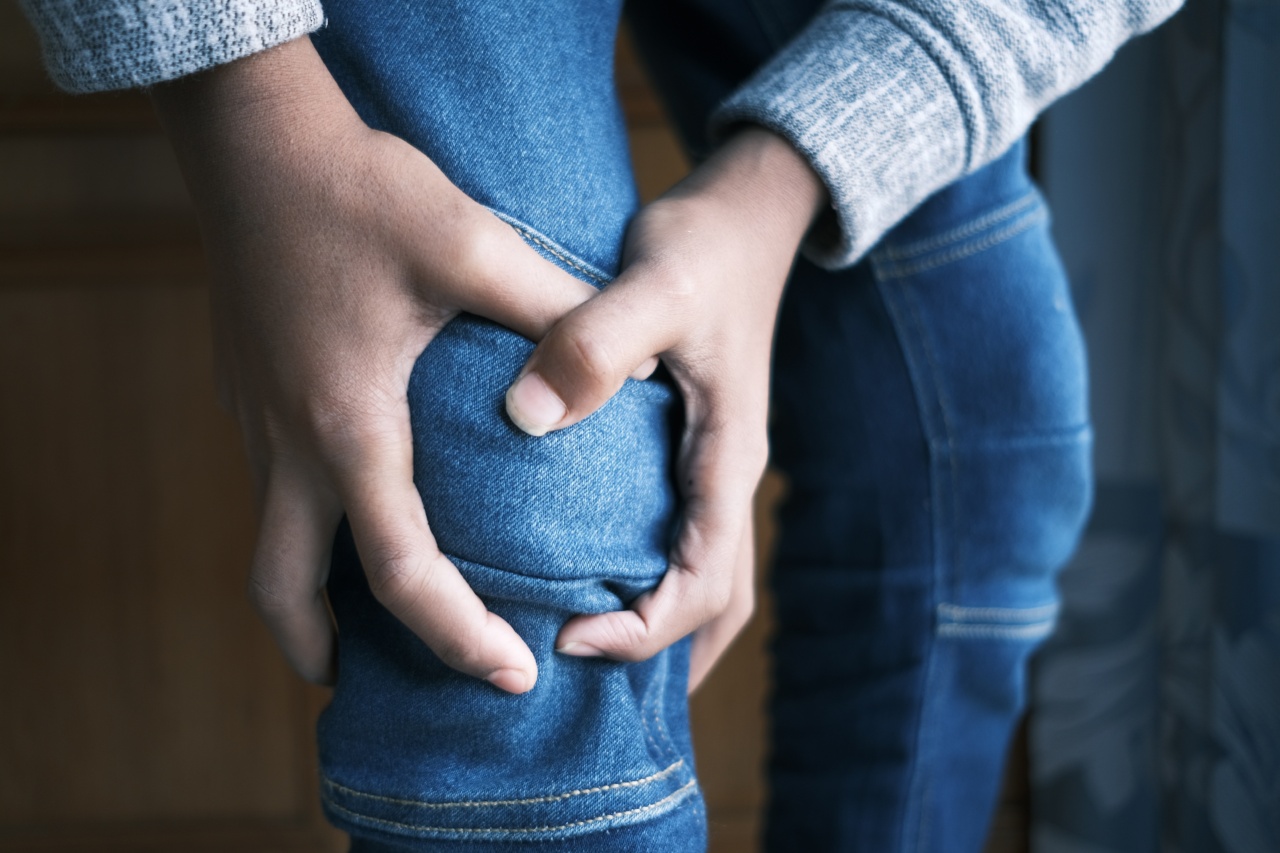Knee pain is a common complaint that affects people of all ages and backgrounds. It can be caused by various factors, ranging from injuries to medical conditions.
In this article, we will demystify the causes of knee pain and explore potential solutions to alleviate discomfort and promote healing.
1. Knee Anatomy
Before diving into the causes of knee pain, it is important to understand the intricate anatomy of this joint. The knee joint is made up of bones, ligaments, tendons, and cartilage.
The femur (thighbone), tibia (shinbone), and patella (kneecap) all come together to form the knee joint. Ligaments, such as the anterior cruciate ligament (ACL) and posterior cruciate ligament (PCL), provide stability to the knee, while tendons connect muscles to bones.
2. Common Causes of Knee Pain
Knee pain can be attributed to various factors. Here are some of the most common causes:.
2.1. Injuries
Knee injuries are a leading cause of knee pain. They can occur during sports activities, falls, accidents, or even as a result of direct impact to the knee.
Common knee injuries include ligament tears (such as ACL or meniscus tears), fractures, dislocations, and patellar tendonitis.
2.2. Osteoarthritis
Osteoarthritis is a degenerative joint disease that affects millions of people worldwide. It occurs when the protective cartilage at the ends of bones wears down over time. As a result, bones rub against each other, causing pain, stiffness, and swelling.
2.3. Rheumatoid Arthritis
Rheumatoid arthritis is an autoimmune disorder that primarily affects the joints. It causes inflammation in the synovium, the lining of the joints, leading to pain, swelling, and eventual joint deformity.
2.4. Bursitis
Bursitis is the inflammation of the fluid-filled sacs (bursae) that cushion the knee joint. Excessive kneeling, repetitive motions, or direct trauma to the knee can cause bursitis, resulting in localized pain and swelling.
2.5. Tendonitis
Tendonitis, or tendinitis, refers to inflammation of the tendons surrounding the knee joint. It commonly occurs due to overuse, repetitive motions, or sudden increase in physical activity. Tendonitis causes pain, tenderness, and difficulty with movement.
2.6. Meniscus Tears
The meniscus is a C-shaped piece of cartilage that acts as a shock absorber in the knee joint. Tears in the meniscus can occur due to twisting motions, aging, or degeneration.
Meniscus tears often cause pain, swelling, and difficulty in fully extending or flexing the knee.
2.7. Gout
Gout is a form of inflammatory arthritis caused by the buildup of uric acid crystals in the joints, including the knee joint. It leads to sudden, severe pain, redness, and swelling.
2.8. Patellofemoral Pain Syndrome
Patellofemoral pain syndrome (PFPS) is a common knee condition characterized by pain in the front of the knee, around the patella. It is often caused by overuse, muscle imbalances, poor alignment of the patella, or trauma.
2.9. Iliotibial Band Syndrome
Iliotibial band syndrome (ITBS) occurs when the iliotibial band, a thick band of tissue that runs from the hip to the shin, becomes irritated or inflamed.
ITBS commonly causes pain on the outer side of the knee during activities such as running or cycling.
2.10. Obesity
Excess weight can exert additional pressure on the knees, leading to wear and tear of the joint cartilage. This can eventually result in knee pain and increased risk of osteoarthritis.
3. Solutions for Knee Pain
Fortunately, various solutions can help alleviate knee pain and promote healing. Here are some options to consider:.
3.1. Rest and Ice
In cases of acute knee pain, it is essential to rest the affected knee and apply ice to reduce inflammation and swelling. Ice packs can be applied for about 15-20 minutes every few hours.
3.2. Compression and Elevation
Compression bandages can help stabilize the knee and reduce swelling. Elevating the leg above heart level can also aid in reducing inflammation and improving blood circulation.
3.3. Medications
Over-the-counter medications, such as nonsteroidal anti-inflammatory drugs (NSAIDs), can help relieve pain and reduce inflammation in the knee.
However, it is essential to consult a healthcare professional before taking any medications, especially for long-term use.
3.4. Physical Therapy
Physical therapy plays a crucial role in the recovery from knee injuries and chronic knee conditions. A trained physical therapist can design exercises and stretches to help strengthen the knee muscles, improve flexibility, and reduce pain.
3.5. Bracing or Orthotics
Knee braces or orthotic devices can provide support and stability to the knee joint, particularly during physical activities.
They can help reduce pain and prevent further damage in cases of ligament instability or conditions like patellofemoral pain syndrome.
3.6. Injections
In some cases, healthcare professionals may recommend corticosteroid injections to reduce inflammation and relieve knee pain.
Hyaluronic acid injections, also known as viscosupplementation, can lubricate the knee joint and reduce symptoms of knee osteoarthritis.
3.7. Surgical Interventions
Surgery may be necessary for certain knee conditions or severe injuries. Procedures such as arthroscopy, ACL reconstruction, meniscus repair, or knee replacement can provide long-term relief and improve knee functionality.
3.8. Lifestyle Modifications
Adopting a healthy lifestyle can contribute to overall knee health.
Maintaining a healthy weight, engaging in low-impact exercises, wearing supportive footwear, and avoiding prolonged repetitive activities can help prevent knee pain and reduce the risk of injuries.
3.9. Alternative Therapies
Several alternative therapies, such as acupuncture, massage therapy, and transcutaneous electrical nerve stimulation (TENS), have shown promising results in relieving knee pain.
However, it is important to consult a qualified healthcare professional before trying any alternative treatments.
3.10. Assistive Devices
For individuals with mobility issues or chronic knee conditions, assistive devices like crutches, canes, or walkers can provide additional support and help reduce the load on the knee joint.
Conclusion
Knee pain can significantly impact daily activities and quality of life. By understanding the potential causes of knee pain and exploring various solutions, individuals can take proactive steps to manage their knee health.
It is crucial to consult with healthcare professionals to accurately diagnose the underlying cause of knee pain and determine the most appropriate treatment plan.




























